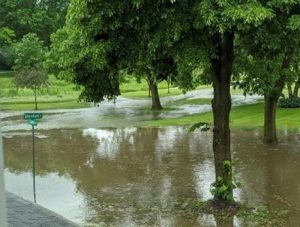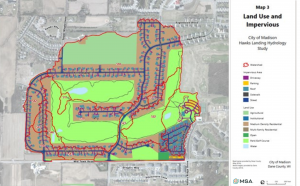In August 2018, the City of Madison was hit by a catastrophic rainfall event that caused flooding in excess of anything seen prior. Measurements between 8” and 10” of precipitation were recorded in a 12-hour period on the City’s west side where flooding was the worst. In response to this event which caused millions of dollars of damage and affected the lives of Dane County residents for months, the City of Madison undertook an initiative to conduct flood studies for major watersheds across the entire City.

MSA was hired in 2019 to complete a flood study for the Greentree/McKenna Watershed on the City’s west side. The Greentree/McKenna watershed is 1,290 acres size, but under larger storms, receives runoff from the adjacent Spring Harbor watershed via a 48” storm sewer that crosses the watershed boundary. To aid in MSA’s study of the area, water resources engineers developed a 2-dimensional XP-SWMM model of the watershed which was calibrated against flow data collected in the watershed by the City. The model was used to evaluate flooding conditions resulting from the 2-year event and up to the 500-year event, as well as the historic August 2018 rainstorm. MSA evaluated the findings of the modeling against various service-level criteria that the City had developed regarding flooding of buildings, streets, and greenways. The modeling indicated that nearly 10 of structures in the watershed could be impacted by a 100-year event and nearly 25% of streets in the watershed did not meet vehicular passage requirements. Since the completion of the study, MSA has been working closely with City engineering staff to develop alternative improvement projects within the watershed to address these issues.

During the course of the project MSA, with close coordination with the City, led a robust involved public engagement program including public meetings at venues within the watershed, online presentations, and neighborhood focus groups including walkthroughs to hear firsthand the experiences of property owners during flooding conditions. During one of these walk-throughs, MSA was provided photographs of actual flooding from a recent rainstorm which happened to exactly coincide with peak runoff conditions recorded by gauges operated by the City. MSA was able to use this information as one more data point to calibrate the 2D model to deliver the most accurate assessment of existing and future conditions from which to plan for needed improvements.




